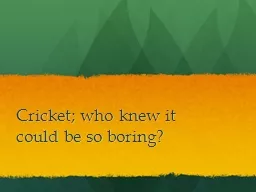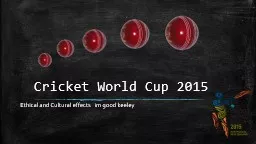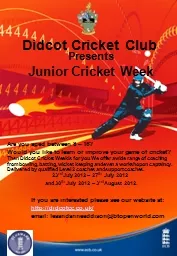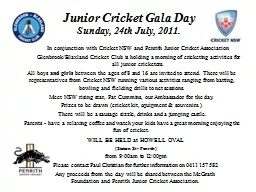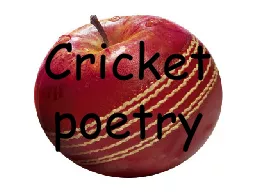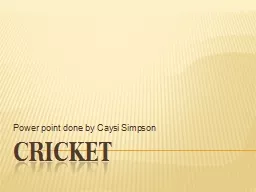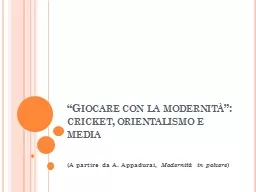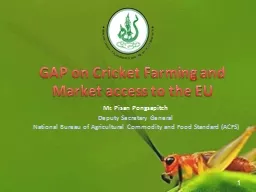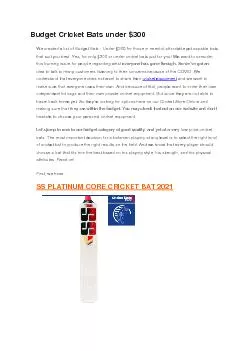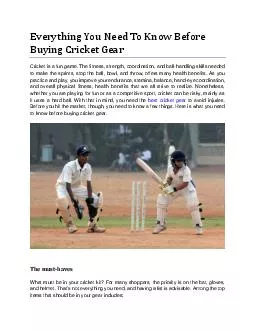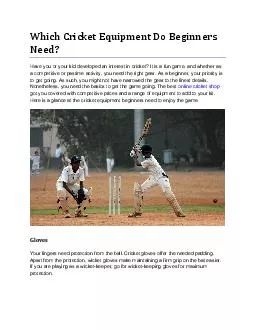PPT-Cricket; who knew it could be so boring?
Author : test | Published Date : 2018-09-19
THESIS Needs to address a relationship between cricket and politics Politics defined very broadly Needs to be at least that there is a positive and negative effect
Presentation Embed Code
Download Presentation
Download Presentation The PPT/PDF document "Cricket; who knew it could be so boring?" is the property of its rightful owner. Permission is granted to download and print the materials on this website for personal, non-commercial use only, and to display it on your personal computer provided you do not modify the materials and that you retain all copyright notices contained in the materials. By downloading content from our website, you accept the terms of this agreement.
Cricket; who knew it could be so boring?: Transcript
Download Rules Of Document
"Cricket; who knew it could be so boring?"The content belongs to its owner. You may download and print it for personal use, without modification, and keep all copyright notices. By downloading, you agree to these terms.
Related Documents

